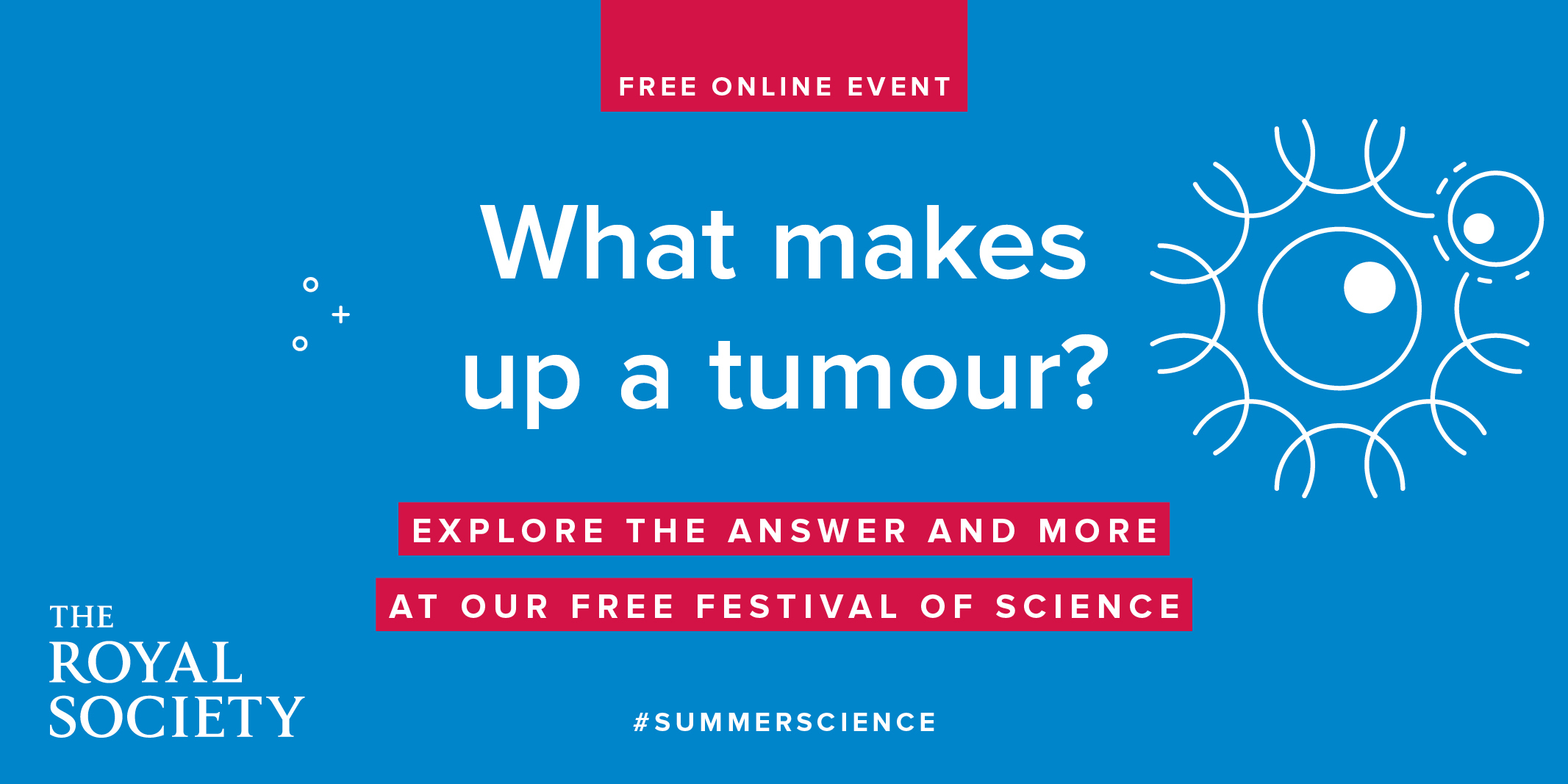
You will need:
- A large cardboard cereal box
- Scissors
- Glue/Pritt stick
- Ruler
- Pen
- Sharp pencil
- Scrap paper
Step 1
Open up the top and bottom flaps of the box and cut them off to give an open rectangle. You can keep the flaps to cut out more shape later.
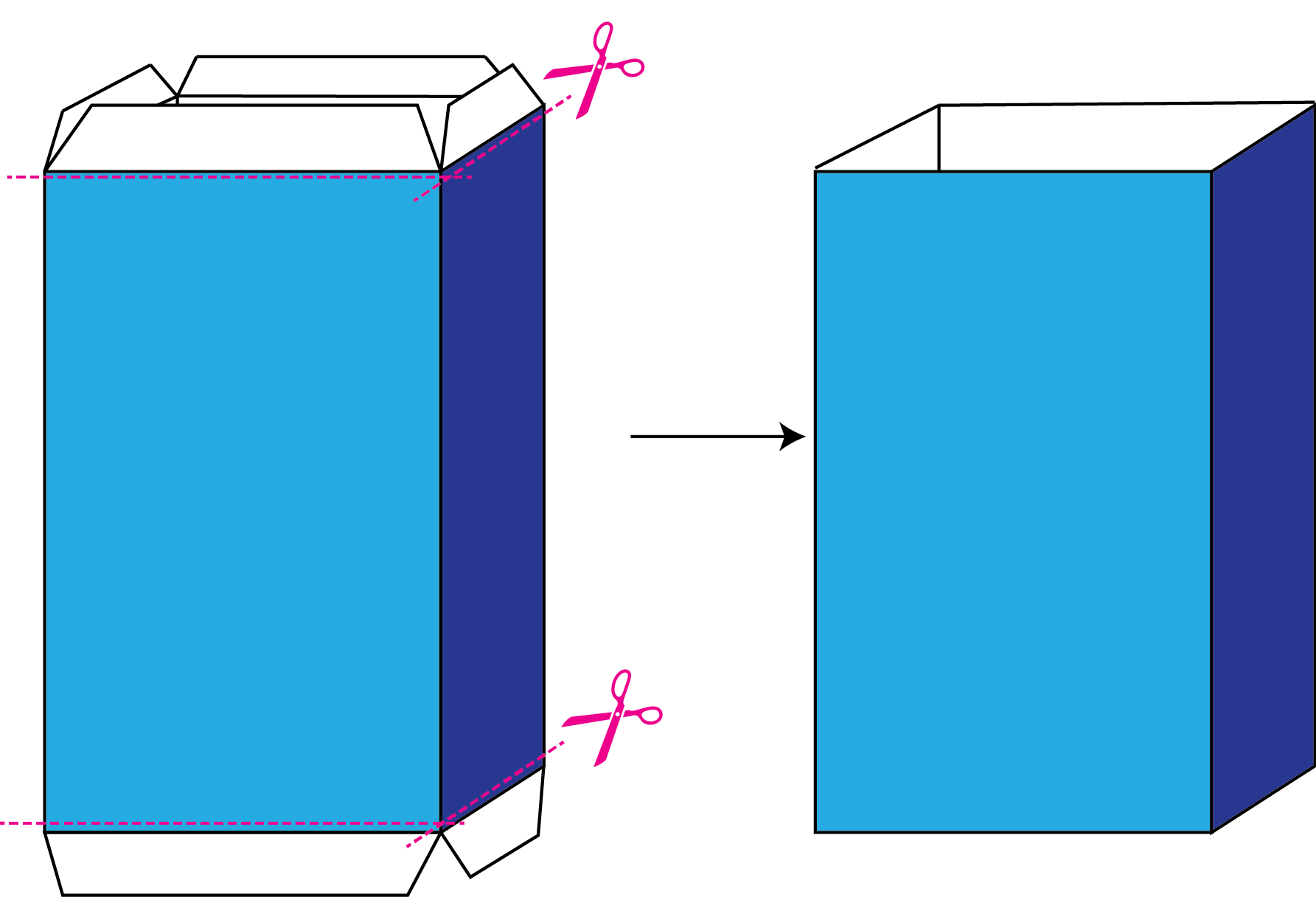
Step 2
Measure ~20cm tall on the box, and cut the extra cardboard from the top. The top part you will use to cut out extra shapes - so don't throw it away!
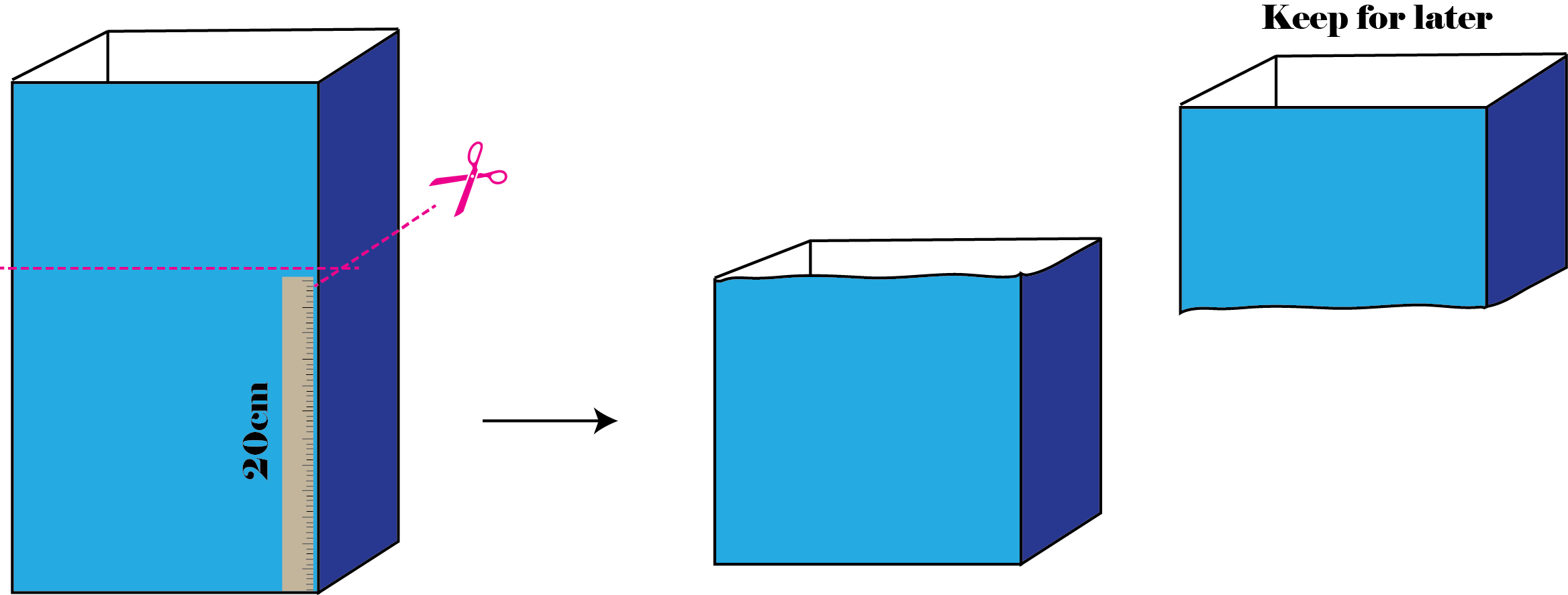
Step 3
From the spare cardboard cut offs, cut ~1cm wide x 18cm long strips. The strips need to be long enough to go through holes on both sides of the box, and have a little bit sticking out on both sides. For my box, this was 18cm long, but yours might be different.
- We'll use 9 strips in the live session, but you can make more later to fill out your model.
Step 4
Now you're going to cut some cell shapes out of the rest of the spare cardboard. There are three different shapes (sizes are just a guide, but keep them less than 4cm wide)
Tumour cells
- Cut out two Tumour cells - 6cm x 3cm (large rectangle)
- These are cells which have mutations - mistakes in the instructions which tell them how to grow and what to do. These mutations make these cells grow much faster than they should and too many of them can make a tumour, which can make you unwell.
- Once you have cut out the tumour cells, glue each of them onto the middle of one of the long strips; the long part of the shape should go in the same direction as the strip.
Step 5
Carefully push the point of the scissors through the cardboard, making a hole so that you can cut out each slit.

You should make two slits on each side of the box - so that you can push both of your tumour cells through.
Step 5
Now we'll make some more cell types to add into the tumour!
Fibroblasts
- Cut out two Fibroblasts - 5cm x 3cm (smaller oval)
- These cells make the structures that hold tissues in your body together. They make long fibres from a substance called collagen, which can help heal cuts and scrapes. In a tumour, the fibroblasts 'talk' to tumour cells, and sometimes the tumour cells make them do bad things - like feeding the tumour cells so that they grow faster.
- Once you have cut out the fibroblasts, glue each of them onto the middle of one of the long strips; the long part of the shape should go in the same direction as the strip.
Collagen
- This bit's easy - take three of your long strips - don't stick anything on them - and they become collagen fibres!
- Collagen is part of the extracellular matrix - long strands of sticky fibres that help keep cells together to make tissues, repair cuts and help your body hold together. Sometimes tumours have too much collagen, and that makes them very stiff - which can make the tumour cells grow faster.
Macrophages
- Cut out two Macrophages - 5cm x 2cm (wavy edges)
- Macrophages (which means "big eaters") are a type of immune cell. Normally they go through your body helping get rid of bacteria and viruses that might make you unwell. Some of them can also help get rid of tumour cells - but sometimes the macrophages actually help the tumour cells to grow.
- Once you have cut out the macrophages, glue each of them onto the middle of one of the long strips; the long part of the shape should go in the same direction as the strip.
Here is a picture of some of the ones I made. If you want to you can add a black dot in the middle - that's the nucleus - the bit of the cell which stores all the instructions to tell the cell what to do. These instructions are stored in a special chemical called DNA.
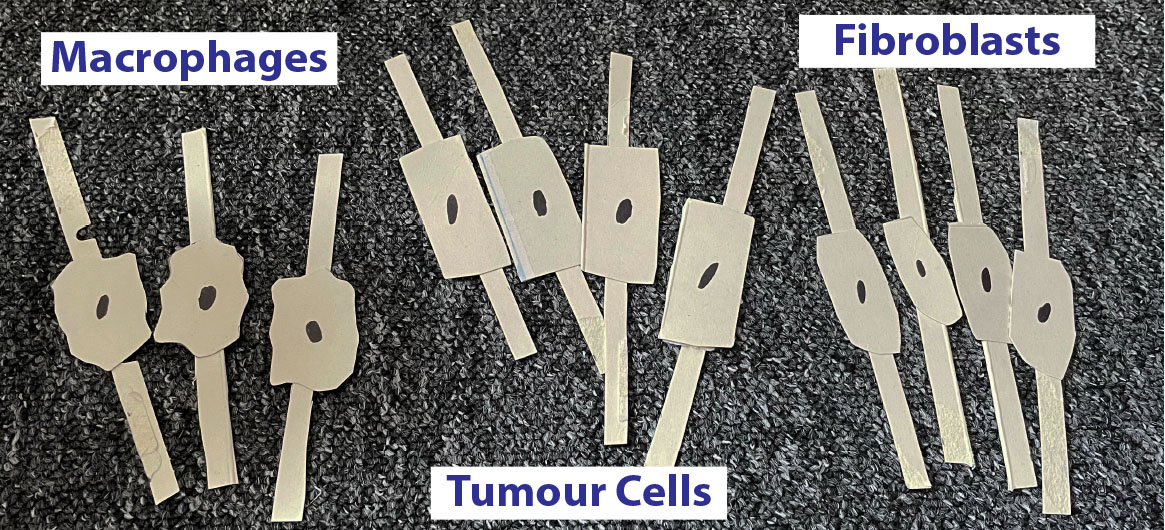
Step 6
Now you need to cut some more holes in the box - enough for all the cells you have made to go through both sides.
Here's my version with slits in both sides. (I had more time and more strips, so I made some extra holes - you can do more after the live session if you want to add more to your tumour.)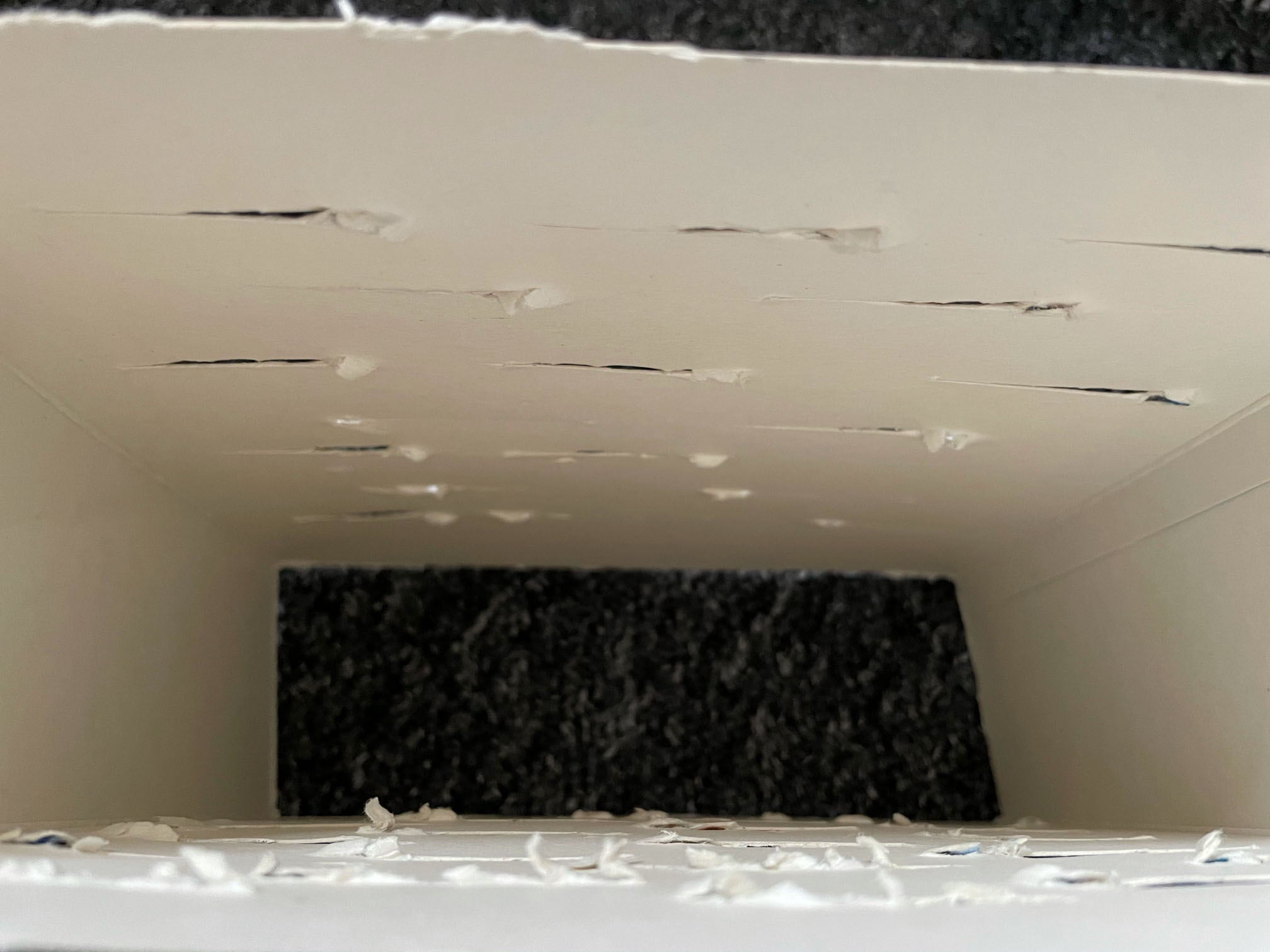
Step 7
Randomly arrange your strips to go through the holes in the box. If you have time you can make some more strips and cell shapes! Here are some pictures of my finished box with the cells and fibres inserted.
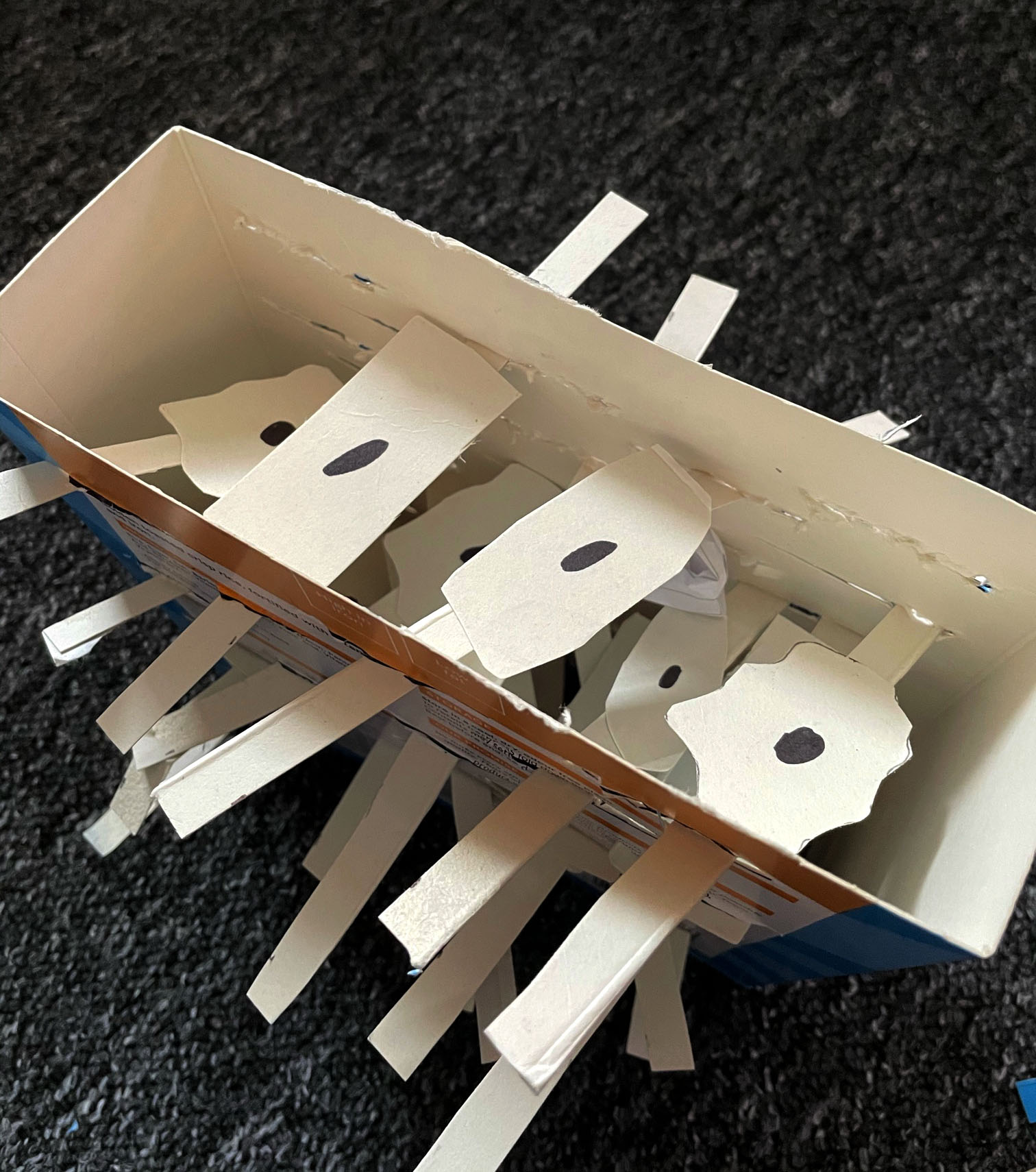
Step 8
Using your scrap paper, make some small balls. These are our T cells. T cells are a kind of immune cell which, if they can get into the tumour, can help kill off cancer cells. Drop yours into the top of your cardboard box - can they get all the way through? What happens if you take out some of the fibroblasts or macrophages? Is it easier to get the T cells inside the tumour now?
Step 9
Now you're all done! If you'd like, you can take a picture of your cardboard tumour and post it on Twitter or Instagram with the hashtag #summerscience! We'll enjoy looking out for your creations!
Why not get some colouring pens or pencils and colour in your cells? For a really finished look, you could decorate the outside of your cardboard box!